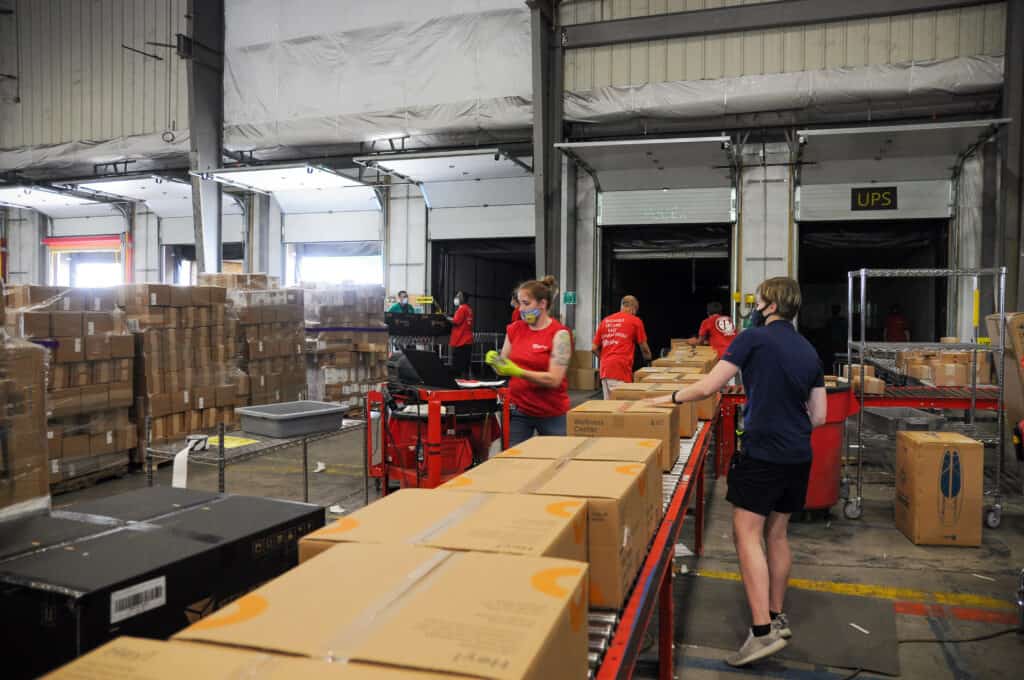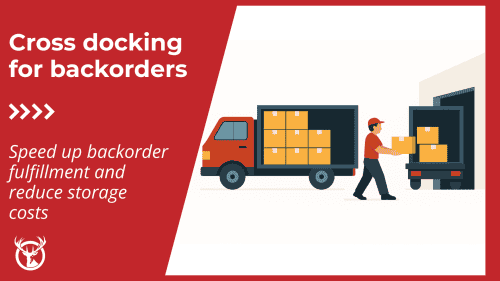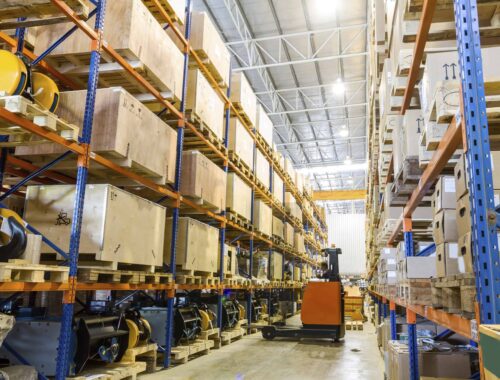The just in time inventory management system started as a manufacturing process. Over time, it has become popular in many sectors of the economy. ECommerce companies use just in time inventory to stay nimble in the face of changing consumer desires.
The opposite of just in time inventory is just in case inventory. A just in case system involves holding contingency inventory. This ensures that you will have enough product on hand to fill orders if your supply chain breaks down. Which of these strategies is best for your company depends on your products and your markets.
If you have stable demand for a product that rarely changes, there can be advantages to having more stock on hand. However, if your product lineup changes each year, each season, or even more often, consider just in time inventory. It can help you reduce costs, free up capital, and sell through more of your stock.
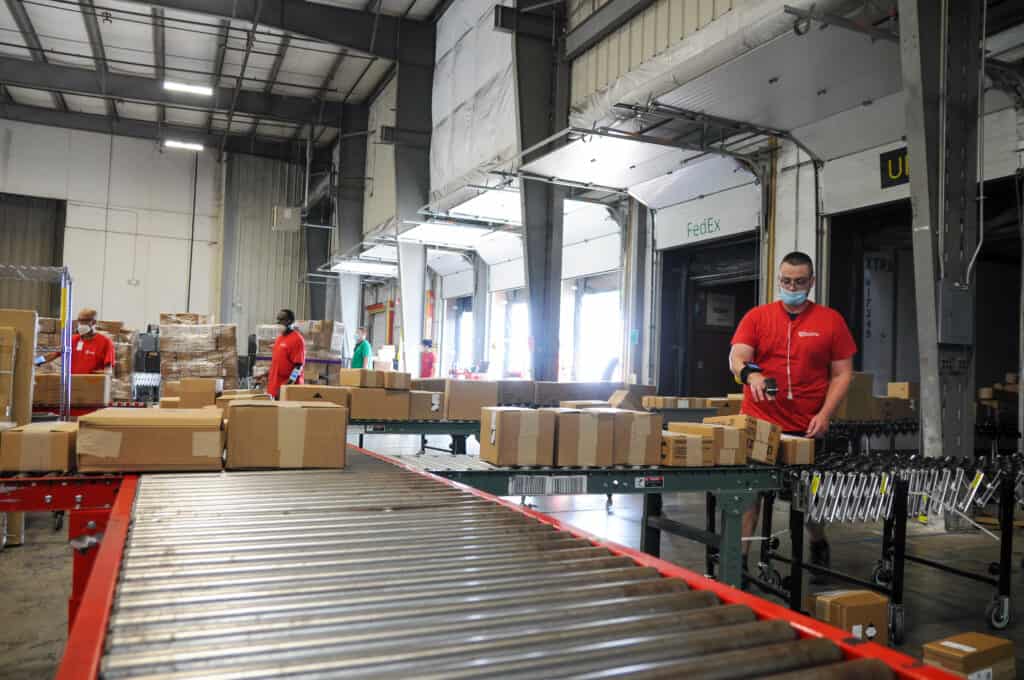
How does just in time work?
In manufacturing, just in time (JiT) processes get the parts needed to make a product to the factory at the moment when they are needed. The process was pioneered by Toyota, and many car manufacturers use JiT.
For eCommerce companies, just in time inventory means lean inventory management. You order products to arrive just in time to be shipped to customers to fill orders. When you use JiT inventory, you shorten your demand forecasting window because you don’t have to plan as far ahead. You can manage your inventory based on what’s selling well, almost in real time. The JiT strategy works best when your supply chain is strong and the turnaround time is short.
Automation has made just in time inventory management easier than ever. Artificial intelligence (AI) creates efficiencies in every link of the supply chain. Computer modeling allows you to more accurately predict timeframes for manufacturing and transport.
However, just in time systems require constant maintenance to be successful. A JiT system is fragile. You need to be ready to quickly change your plan. This will allow you to keep your products in stock and adjust your product mix based on consumer demand.
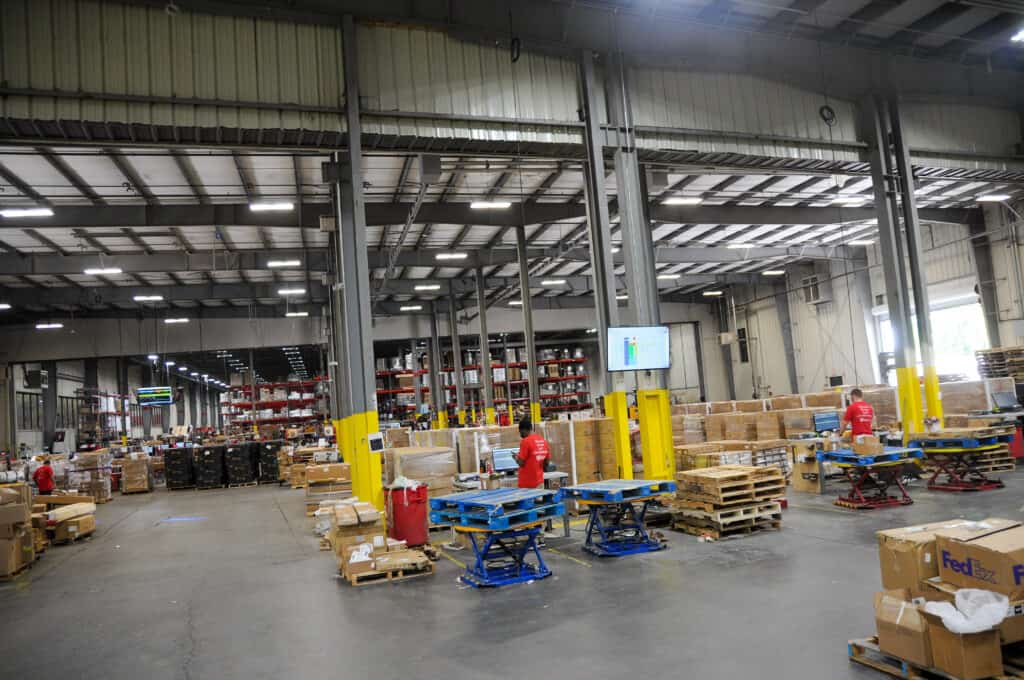
Pros and cons of just in time inventory
Just in time inventory has some big benefits. However, there are also drawbacks you should be aware of.
Pros of just in time inventory
- Just in time inventory allows your business to reduce overhead and spend less on warehouse space. This frees up capital to use for marketing and business expansion. JiT systems can help you grow your business.
- Just in time lets you respond quickly to consumer trends. Because you’re not holding a lot of inventory, you can more easily change your order levels. You also have room to add new products to the mix.
- You are less likely to be stuck with excess inventory that you can’t sell at full price.
Cons of just in time inventory
- You’ll need robust systems to manage your supply chain and forecast demand. JiT systems must be maintained to work well.
- If 2020 has taught eCommerce businesses one thing, it’s to prepare for disruptions. Companies that use just in time inventory are hit harder when supply chains break.
- With just in time inventory, you risk running out of products between shipments. That can lead to backorders or missed sales.
Strategies for successful just in time inventory management
- Turn to software and apps to automate your supply chain management. Apps can help you stay on top of your just in time production and transport without spending all your time managing it.
- Use multiple suppliers for the same products. Where possible, choose suppliers in different geographic areas. This will help protect you from business interruptions due to extreme weather, civil unrest, disease outbreaks, or other disruptions.
- Keep channels of communication open with your suppliers. Enlist your suppliers as partners in your just in time system. Share information about your sales projections and their production capacity.
- Outsource your order fulfillment. This takes one more task off your plate. Plus, you 3PL is a partner who’s an expert at inventory management.
Examples of just in time inventory
While the just in time lean management system has been developed and refined in recent decades, some industries have used it for much longer.

Restaurants
Food preparation is built around a just in time inventory model. Because many of the raw ingredients for food preparation are not shelf-stable, a chef will buy meat and produce each day. The chef has to estimate in the morning what diners will order during the dinner service. Food preparation is also just in time at most restaurants. Meals are only assembled and cooked once someone orders them. This system does more than help restaurants serve hot, fresh food to customers. It also allows the restaurant the greatest flexibility to fill unpredictable customer orders with the ingredients it has on hand.

Large manufacturers
Many of the biggest companies in the world use just-in-time processes for manufacturing and inventory management. These include Apple, Tesla, General Motors, and Dell. Retailers like Walmart and Target employ just in time stocking, especially for seasonal items.

Fast fashion
Just in time systems have led to the creation of a whole industry segment: fast fashion. Chains like Zara and H&M don’t order ahead for a whole season. Instead, new garments are designed, manufactured, and marketed with a lightning-fast turnaround. This allows fast fashion brands to keep up with fashion trends that can change with an Instagram post.

Print on demand
Technological change has even brought just in time processes to one of the world’s oldest industries: book printing. Publishers no longer have to guess how big a print run should be. Print on demand technology allows them to print a copy of a book after a customer places an order. Printing and binding are so fast and automated that customers still receive their reading material quickly. Print on demand also saves on shipping, because books can be printed and shipped from locations around the world, close to the customer.

Dropshipping
In the eCommerce world, dropshipping is a form of just in time inventory. With the drop-shipping business model, you don’t purchase products from the manufacturer until one of your customers places an order. The eCommerce seller carries no inventory. However, rather than true just in time, dropshipping simply outsources inventory management and storage to the dropshipping supplier.
How to find your inventory management sweet spot
Your inventory management strategy will probably fall somewhere between just in time and just in case. You don’t want to get stuck with a lot of unsold merchandise at the end of a season. But you also don’t want supply chain glitches to leave you with empty shelves. That could cost you sales.
Ideally, eCommerce businesses should have enough stock on hand to meet demand until the next order arrives from the manufacturer. In addition, you want to keep some safety stock to ensure against supply disruptions. When you optimize your stocking levels, you increase your turnover ratio. You also pay less for storage. You might even be able to stock more SKUs within the same amount of shelf space.
At Red Stag Fulfillment, we work with our clients to optimize their inventory management. We help you figure out your restock levels based on the time it takes to get your products from the factory to the warehouse shelves. Red Stag Fulfillment team members are steeped in lean management practices like just in time inventory management. We know that our clients’ success leads to our success. We are excited to partner with you to grow your business and ours.
